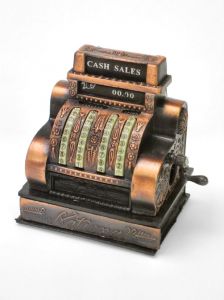
“What’s the going rate?” writers ask me, hoping there is a pat answer that will let them know if they’re being ripped off.
But there is no going rate, for anything in freelancing. There’s only what you’re willing to take and what the market will bear. Where those meet, you have a gig.
What really matters is your hourly rate. Time is your most precious resource, so when you’re pricing a job you want to figure as best you can how long it will take you to do the gig. Then multiply by your hourly rate to get your bid. The hourly rate you need will depend on your own circumstances — how high expenses are, how many available work hours you have, and what you consider appropriate.
As you gain experience, keep raising that hourly rate. That’s really it in a nutshell.
To help you start setting your rates, here are seven questions I ask to help me decide if a writing gig is worth taking:
- How bad do you need this gig? If you have open time in your schedule, it can be better to fill it with any sort of paid writing rather than simply having downtime. Getting fully booked is key to raising your rates in the long run, as once you’re fully booked you can start to be choosier about which gigs you take. If it’s a particularly interesting assignment or a high-profile client, it might even be worth doing a small free assignment from them, to get a valuable clip that could help you move up.
- Will this client recommend you? If rates are low, you need to know if this client is the type who would talk you up to other editors or marketing managers. I know writers who will only do pro bono works for clients who are guaranteed referrals.
- Does this client have more work for you? You have to do a lot less marketing when your clients have ongoing work for you, month after month. Since I enjoy writing more than marketing, I’ve been known to discount my rates a bit for clients who have steady work, while one-off projects go at my top rates.
- How pleasant do they seem? The longer I do this, the more I value clients with a nice personality — they’re easygoing, fun to talk to, clear about what they want, and seem to love my first drafts. The more of a pain a client is, the more you should charge.
- How complicated is the work? This is one of the most important factors. An offer of $50 a blog post might sound okay, but if it turns out the client wants 1,000-word blog posts with multiple interviews for each one, it’ll be disastrous on an hourly-rate basis.
- How sophisticated is the topic? Writing about pets for an audience with a 6th grade education is going to be easier than writing for an audience of retirement-plan managers. The more you’ll have to research an industry you don’t know well, the longer it will take, and the more you need to charge.
- What payment terms will they agree to? This one took me a while to catch onto, but if a client doesn’t pay for four months or more, they need to pay top rates. They’re basically using you as a short-term lender and running their business with what is rightfully your money. I hate that. You also often end up wasting time having to chase down these slow-payers, so you have to figure that into your bid. Folks that pay me the day I put in an invoice, on the other hand, deserve a discount.
How do you decide what to charge? Leave a comment let us know.
Cash register: ctechs – stock.xchng









